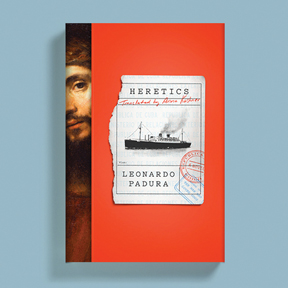HUC-JIR admission policy obsolete; bad for future of Reform Jews

Some time ago I was talking with a dear friend, also a Reform Jew, who wanted to be a cantor. I asked them why they didn’t take the leap and apply to the Hebrew Union College-Jewish Institute of Religion (HUC-JIR), our movement’s most well-known institution for Jewish higher education, to pursue their passion. They explained their personal life made that option impossible; a Jew whose life-partner is not Jewish is not welcome at the seminary.
I was astounded and appalled! How is that possible in our modern day Reform movement?
I looked up HUC-JIR’s admissions policy online, and, yes, in fact, it does discriminate in this very specific way:
“We celebrate the contribution of people of all faiths toward building and sustaining loving Jewish homes, and yet we believe that rabbis, cantors and educators should exemplify a distinct standard of Jewish continuity. Therefore, HUC-JIR will only admit, graduate or ordain candidates who, if in a committed long-term relationship, are in such a relationship with a Jewish partner.”
This policy is dismaying and counter-productive for many reasons:
1. My understanding of Jewish history, belief and tradition is that our Jewish leaders are no different than the rest of us. They may be trained as teachers and specialists to lead worship and to lead congregations, but modern-day rabbis and cantors are not the priests of old; they hold no special place in the eyes of God. So what does it mean to be held to “a distinct standard of Jewish continuity?”
Clearly, that is code for making Jewish children and raising them in a Jewish home. Yet the HUC-JIR admits candidates — both single and coupled, both gay and straight — who do not intend to bear, adopt or otherwise raise children. HUC-JIR admits women candidates past the age of child-bearing. HUC-JIR admits candidates who intend to limit the size of their families. HUC-JIR admits candidates who are infertile.
If the concern is “Jewish continuity,” why are candidates committed to life partners who are not Jewish — including those who plan to raise Jewish children in a Jewish home — seen as the only detractors?
2. The future of our people, as the HUC-JIR readily admits, depends on the contributions and the goodwill of interfaith couples — many of whom are raising Jewish children in Jewish homes. Many of the families in my synagogue have one partner who is not Jewish. Last year our son married a woman who is not Jewish — under a chuppah, with a ketubah, officiated by a rabbi ordained by the Jewish Theological Seminary. They are building a Jewish home with much greater care and intention than many couples where both were born Jewish or where one or both formally converted to our religion.
What signal does it send to interfaith families to tell them there is a higher standard of Judaism — which they do not meet? How does that help keep them included, so that more families remain engaged in congregational life and more children are raised and educated as Jews? One could argue that the seminary’s policy of exclusion harms Jewish continuity rather than promoting it.
3. As an independent professional woman, I am offended that my partner’s faith, behavior, education or any other characteristic could ever limit my own educational or career options. Imagine the outrage today if a company had a policy of only hiring or promoting men with stay-at-home wives, once standard practice in a corporate culture now seen as anachronistic and patriarchal.
In the same way, the time is long past when a congregation hired a male rabbi (or cantor) and got a second staff person “for free” in the form of his willing, available wife. If a person is fully able to fulfill the duties, responsibilities and commitments of the position of rabbi or cantor, what does it matter the faith of their partner? A congregation is hiring one — not both.
4. We are walking away from talent. My friend would have made an amazing cantor. And yet, because of this arcane and bigoted policy, they cannot study at the HUC-JIR to become one. This policy deprives them of the opportunity for career development within the Jewish faith, and it deprives the Jewish community of a much-needed cantor.
I did not previously know about this obsolete and offensive policy of exclusion. I bet a lot of Reform Jews don’t know either and would be upset if they did. Our community of modern, Reform Jews needs to call upon the HUC-JIR to change their policy to reflect our movement’s values of inclusivity, fairness and individual autonomy.
Martha Gershun is a retired nonprofit executive. She is a member of Congregation Beth Torah, where she serves on the Liturgical Committee and leads worship as a lay volunteer.









